 W
WBenjamin L. Abruzzo was an American balloonist and businessman who helped make Albuquerque, New Mexico an international ballooning center. He was part of the balloon crews that made the first Atlantic ocean crossing by balloon in the Double Eagle II and the first Pacific ocean crossing by balloon in the Double Eagle V.
 W
WMaxie Anderson was an American hot air balloonist and Congressional Gold Medal recipient He was part of the balloon crews that made the first Atlantic ocean crossing by balloon in the Double Eagle II and the first Pacific ocean crossing by balloon in the Double Eagle V.
 W
WJoão Ribeiro de Barros was the first aviator of the three Americas to make an air crossing from Europe to America, on April 28, 1927, crossing the Atlantic Ocean with the Savoia-Marchetti S.55 hydroplane Jahú. On his flight, he had the company of three others: João Negrão (co-pilot), Newton Braga (navigator) and Vasco Cinquini (mechanic). The four aviators departed from Genoa, in Italy, to Santo Amaro, with stopovers in Spain, Gibraltar, Cabo Verde and Fernando de Noronha, in the Brazilian territory.
 W
WThe Bremen is a German Junkers W 33 aircraft that made the first successful transatlantic aeroplane flight from east to west on April 12 and 13, 1928.
 W
WDon Cameron MBE BSc MA MIEE D.Eng FRSGS is a Scottish balloonist, and later founder of Cameron Balloons, the world's largest hot air balloon manufacturer. Don Cameron is one of the few aeronauts to be awarded the Harmon Trophy, as the 'World's Outstanding Aviator' in 1999.
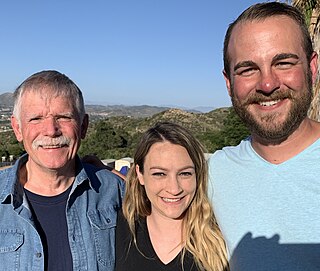 W
WTim Cole is the balloonist who designed and built the Spirit of Freedom balloon capsule. This was the first aircraft of any type to carry a solo pilot around the world. In 2002 pilot Steve Fossett flew the Spirit of Freedom on the first successful nonstop solo circumnavigation flight.
 W
WThe Decennial Air Cruise was a mass transatlantic flight from Orbetello, Italy, to the Century of Progress International Exposition, Chicago, Illinois. The expedition, organized by the Italian Regia Aeronautica, began on July 1, 1933 and ended on August 12 of the same year. It consisted of 25 Savoia-Marchetti S.55X seaplanes crossing the Atlantic Ocean in formation, forming the greatest mass flight in aviation history. The Italian Squadrons, led by General Italo Balbo, were welcomed enthusiastically in the Netherlands, the UK, Iceland, Canada and particularly in the United States of America, where they became known as the Italian Air Armada. A publicity success for Fascist Italy, Balbo further viewed the expedition as a pioneering step towards commercial flights across the Atlantic.
 W
WCarlo Del Prete was a pioneer aviator from Italy.
 W
WDouble Eagle II, piloted by Ben Abruzzo, Maxie Anderson, and Larry Newman, became the first balloon to cross the Atlantic Ocean when it landed 17 August 1978 in Miserey near Paris, 137 hours 6 minutes after leaving Presque Isle, Maine.
 W
WThe first aerial crossing of the South Atlantic was made by the Portuguese naval aviators Gago Coutinho and Sacadura Cabral in 1922, to mark the centennial of Brazil's independence. Coutinho and Cabral flew in stages from Lisbon, Portugal, to Rio de Janeiro, Brazil, using three different Fairey III biplanes, and covered a distance of 8,383 kilometres (5,209 mi) between 30 March and 17 June. Although the North Atlantic had already been traversed in a non-stop flight by John Alcock and Arthur Brown in 1919, Coutinho and Cabral's flight remains notable as a milestone in transatlantic aviation, and for its use of new technologies such as the artificial horizon.
 W
WJames Stephen Fossett was an American businessman and a record-setting aviator, sailor, and adventurer. He was the first person to fly solo nonstop around the world in a balloon and in a fixed-wing aircraft. He made his fortune in the financial services industry and held world records for five nonstop circumnavigations of the Earth: as a long-distance solo balloonist, as a sailor, and as a solo flight fixed-wing aircraft pilot.
 W
WRamón Franco Bahamonde, was a Spanish pioneer of aviation, a political figure and brother of later caudillo Francisco Franco. Well before the Spanish Civil War, during the reign of Alfonso XIII, both brothers were acclaimed as national heroes in Spain; however, the two had strongly differing political views. They had a less-known brother, Nicolás.
 W
WCarlos Viegas Gago Coutinho, GCTE, GCC, generally known simply as Gago Coutinho was a Portuguese geographer, cartographer, naval officer, historian and aviator. An aviation pioneer, Gago Coutinho and Sacadura Cabral were the first to cross the South Atlantic Ocean by air, from March to June 1922, from Lisbon, Portugal, to Rio de Janeiro, Brazil.
 W
WColonel George Eustace Amyot Hallett was a pioneer aviator. He and John Cyril Porte planned to make the first transatlantic flight. They were going to use a flying boat commissioned by Rodman Wanamaker, but were prevented by the start of World War I. In 1919 the transatlantic flight of Alcock and Brown set the record that they hoped to achieve.
 W
WThe Junkers W 33 was a German single-engine transport aircraft. It was aerodynamically and structurally advanced for its time (1920s), a clean, low-wing all-metal cantilever monoplane. Almost 200 were produced. It is remembered in aviation history for the first east–west non-stop heavier-than-air crossing of the Atlantic.
 W
WHermann Köhl was a German aviation pioneer and pilot of the first transatlantic flight by a fixed-wing aircraft from East to West.
 W
WCharles Augustus Lindbergh was an American aviator, military officer, author, inventor, and activist. At the age of 25 in 1927, he went from obscurity as a U.S. Air Mail pilot to instantaneous world fame by winning the Orteig Prize for making a nonstop flight from New York City to Paris. Lindbergh covered the 33 1⁄2-hour, 3,600-statute-mile (5,800 km) flight alone in a purpose-built, single-engine Ryan monoplane, the Spirit of St. Louis. While the first non-stop transatlantic flight had been made 8 years earlier, this was the first solo transatlantic flight, the first transatlantic flight between two major city hubs, and the longest transatlantic flight by almost 2,000 miles. Thus it is widely considered a turning point in world history for the development and advancement of aviation.
 W
WAntonio Lippi (1900–1957) was an Italian aviator. He participated to the Transatlantic flight organized by Italo Balbo and awarded with the Gold Medal of Aeronautic Valor to aeronautic valor of Regia Aeronautica.
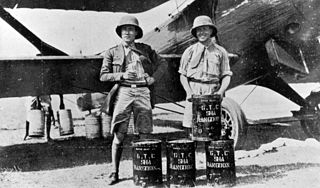 W
WJoaquín Loriga Taboada was a Galician aviation pioneer. As a Captain promoted in 1926, together with two pilots and three mechanical engineers, the first long-distance flight from Madrid to Manila of over eleven thousand miles.
 W
WThe NC-4 was a Curtiss NC flying boat that was the first aircraft to fly across the Atlantic Ocean, albeit not non-stop. The NC designation was derived from the collaborative efforts of the Navy (N) and Curtiss (C). The NC series flying boats were designed to meet wartime needs, and after the end of World War I they were sent overseas to validate the design concept.
 W
WLarry Newman was an American pilot, business man, and balloonist. He was part of the balloon crews that made the first Atlantic ocean crossing by balloon in the Double Eagle II and the first Pacific ocean crossing by balloon in the Double Eagle V.
 W
WNorth Atlantic Tracks, officially titled the North Atlantic Organised Track System (NAT-OTS), is a structured set of transatlantic flight routes that stretch from the northeast of North America to western Europe across the Atlantic Ocean, within the North Atlantic airspace (NAT) region. They ensure that aircraft are separated over the ocean, where there is little radar coverage. These heavily travelled routes are used by aircraft flying between North America and Europe, operating between the altitudes of 29,000 and 41,000 ft inclusive. Entrance and movement along these tracks is controlled by special oceanic control centres to maintain separation between airplanes. The primary purpose of these routes is to allow air traffic control to effectively separate the aircraft. Because of the volume of NAT traffic, allowing aircraft to choose their own co-ordinates would make the ATC task far more complex. They are aligned in such a way as to minimize any head winds and maximize tail winds impact on the aircraft. This results in much more efficiency by reducing fuel burn and flight time. To make such efficiencies possible, the routes are created twice daily to take account of the shifting of the winds aloft and the principal traffic flow, eastward in North America evening and westward twelve hours later.
 W
WL'Oiseau Blanc was a French Levasseur PL.8 biplane that disappeared in 1927 during an attempt to make the first non-stop transatlantic flight between Paris and New York City to compete for the Orteig Prize, flown by French World War I aviation heroes Charles Nungesser and François Coli. They took off from Paris on 8 May 1927 and were last seen over Ireland. Less than two weeks later, Charles Lindbergh successfully made the New York–Paris journey and claimed the prize in the Spirit of St. Louis.
 W
WFrancesco de Pinedo was a famous Italian aviator. A Regia Marina officer who transferred to the Regia Aeronautica, he was an advocate of the seaplane who is best known for his long-range flying boat flights in the 1920s that demonstrated the feasibility of global air travel.
 W
WPlus Ultra is a Dornier Do J flying boat which completed the first transatlantic flight between Spain and South America in January 1926 with a crew of Spanish aviators, that included: Ramón Franco, Julio Ruiz de Alda Miqueleiz, Juan Manuel Duran, and Pablo Rada.
 W
WPrincess Xenia was a Fokker F.VIIa aircraft, built in 1925 for the Dutch airline KLM and initially used for regular journeys between Amsterdam and London via Rotterdam. In 1927, it was bought by a wealthy American who was married to a Russian princess and named the aircraft Princess Xenia for her. He loaned the aircraft to aviator Robert Henry McIntosh, also known as 'All-Weather Mac', who in 1927, with two others, failed in an attempt to make the east-to-west transatlantic flight. Princess Xenia was subsequently commissioned to fly non-stop from London to India, but unsuccessfully.
 W
WSpirit of Freedom balloon was a Rozière balloon designed and built by Donald Cameron and Tim Cole. In 2002 solo pilot Steve Fossett flew the Spirit of Freedom to become the first successful around-the-world nonstop solo flight in any kind of aircraft. On June 19, 2002, the 10-story-high balloon Spirit of Freedom lifted off from Northam, Western Australia, and landed in Queensland, Australia, on July 3, 2002. The solo flight circumnavigation lasted 13 days, 8 hours, 33 minutes and covered 20,626.48 statute miles (33,195.10 km). They reached speeds of up to 322 kilometers per hour, and flew as high as 10,580 meters.
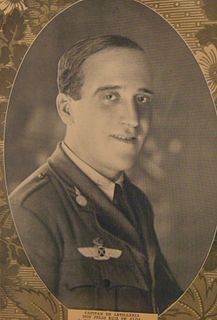 W
WJulio Ruiz de Alda Miqueleiz was a Spanish aviator and politician. He joined the Army at the age of 15 and developed an interest in planes. He was the co-pilot of the Plus Ultra as it completed a transatlantic flight in 1926. The Plus Ultra departed from Palos de la Frontera, in Huelva, Spain on January 22 and arrived in Buenos Aires, Argentina on January 26. It stopped over at Gran Canaria, Cape Verde, Pernambuco, Rio de Janeiro and Montevideo. The 10,270 km journey was completed in 59 hours and 39 minutes. In 1931 along with José Antonio Primo de Rivera he was a founding member of the Falange movement. He was shot without a trial by anarchist militia in Madrid's Cárcel Modelo prison on August 23, 1936, after the beginning of the civil war.
 W
WArtur de Sacadura Freire Cabral, GCTE, known simply as Sacadura Cabral, was a Portuguese aviation pioneer. He, together with fellow aviator Gago Coutinho, conducted the first flight across the South Atlantic Ocean in 1922, and also the first using only astronomical navigation, from Lisbon, Portugal, to Rio de Janeiro, Brazil. On 15 November 1924, he disappeared while flying over the English Channel, along with his co-pilot, Mechanical Corporal José Correia, due to fog and his shortening eyesight. Although some mechanical wreckage from his seaplane was discovered four days later, the bodies were never recovered. A statue dedicated to them is located in Lisbon. Another statue is located in his hometown, Celorico da Beira. He was the granduncle of Portuguese politicians Miguel Portas and Paulo Portas.
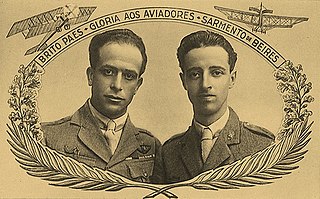 W
WJosé Manuel Sarmento de Beires was a Portuguese Army officer and an aviation pioneer.
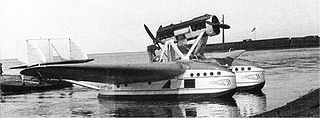 W
WThe Savoia-Marchetti S.55 was a double-hulled flying boat produced in Italy, beginning in 1924. Shortly after its introduction, it began setting records for speed, payload, altitude and range.
 W
WMajor George Herbert "Lucky Breeze" Scott, CBE, AFC, was a British airship pilot and engineer. After serving in the Royal Naval Air Service and Royal Air Force during World War I, Scott went on to command the airship R34 on its return Atlantic crossing in 1919, which marked the first transatlantic flight by an airship and the first east–west transatlantic flight by an aircraft of any kind. Subsequently, he worked at the Royal Airship Works in connection with the Imperial Airship Scheme and took part in a second return Atlantic crossing, this time by the R100, in 1930. He was killed later in the year aboard the R100's near-sister, the R101, when it crashed in northern France during a flight to India.
 W
WThe Spirit of St. Louis is the custom-built, single-engine, single-seat, high-wing monoplane that was flown by Charles Lindbergh on May 20–21, 1927, on the first solo nonstop transatlantic flight from Long Island, New York, to Paris, France, for which Lindbergh won the $25,000 Orteig Prize.
 W
WBritish aviators John Alcock and Arthur Brown made the first non-stop transatlantic flight in June 1919. They flew a modified First World War Vickers Vimy bomber from St. John's, Newfoundland, to Clifden, Connemara, County Galway, Ireland. The Secretary of State for Air, Winston Churchill, presented them with the Daily Mail prize for the first crossing of the Atlantic Ocean by aeroplane in "less than 72 consecutive hours." A small amount of mail was carried on the flight, making it the first transatlantic airmail flight. The two aviators were awarded the honour of Knight Commander of the Most Excellent Order of the British Empire (KBE) a week later by King George V at Windsor Castle.
 W
W"WE" is an autobiographical account by Charles A. Lindbergh (1902-1974) about his life and the events leading up to and including his May 1927 New York to Paris solo trans-Atlantic flight in the Spirit of St. Louis, a custom-built, single engine, single-seat Ryan monoplane. It was first published on July 27, 1927 by G.P. Putnam's Sons in New York.